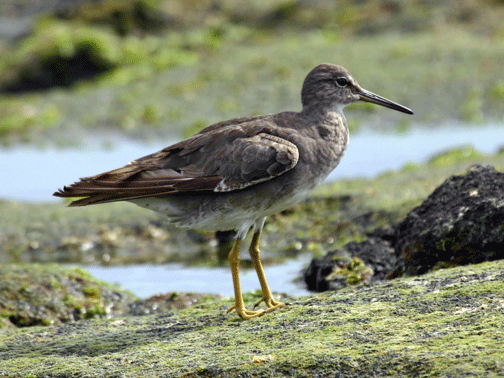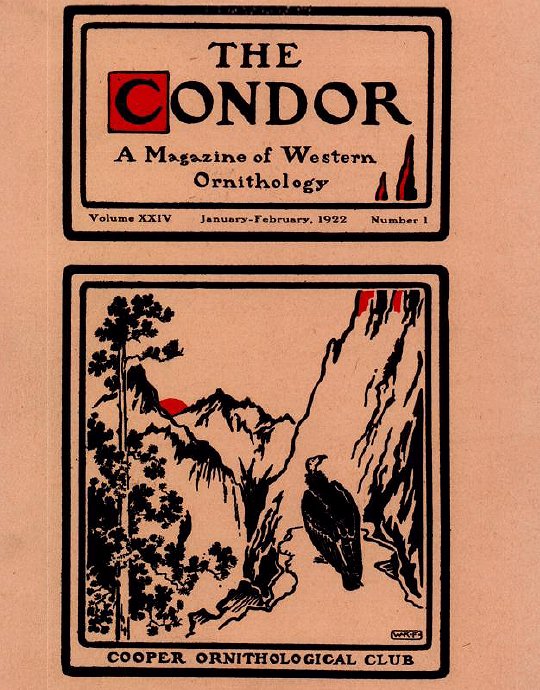|
Tringa Erythropus
The spotted redshank (''Tringa erythropus'') is a wader (shorebird) in the large bird family Scolopacidae. The genus name ''Tringa'' is the New Latin name given to the green sandpiper by Aldrovandus in 1599 based on Ancient Greek ''trungas'', a thrush-sized, white-rumped, tail-bobbing wading bird mentioned by Aristotle. The specific ''erythropus'' is from Ancient Greek ''eruthros'', "red", and ''pous'', "foot". It breeds across northern Scandinavia and the northern Palearctic and migrates south to the Mediterranean, the southern British Isles, France, tropical Africa, and tropical Asia for the winter. It is an occasional vagrant to Australia and North America. Taxonomy The spotted redshank was described by German zoologist Peter Simon Pallas in 1764 and given the binomial name ''Scolopax erythropus''. It is a monotypic species, with no recognised subspecies. Taxonomically, it forms a close-knit group with several other large ''Tringa'' species, with molecular sequencing showi ... [...More Info...] [...Related Items...] OR: [Wikipedia] [Google] [Baidu] |
Peter Simon Pallas
Peter Simon Pallas Fellow of the Royal Society, FRS FRSE (22 September 1741 – 8 September 1811) was a Prussian zoologist and botanist who worked in Russia between 1767 and 1810. Life and work Peter Simon Pallas was born in Berlin, the son of Professor of Surgery Simon Pallas. He studied with private tutors and took an interest in natural history, later attending the University of Halle and the University of Göttingen. In 1760, he moved to the University of Leiden and passed his doctor's degree at the age of 19. Pallas travelled throughout the Netherlands and to London, improving his medical and surgical knowledge. He then settled at The Hague, and his new system of animal classification was praised by Georges Cuvier. Pallas wrote ''Miscellanea Zoologica'' (1766), which included descriptions of several vertebrates new to science which he had discovered in the Dutch museum collections. A planned voyage to southern Africa and the East Indies fell through when his father reca ... [...More Info...] [...Related Items...] OR: [Wikipedia] [Google] [Baidu] |
Common Greenshank
The common greenshank (''Tringa nebularia'') is a wader in the large family Scolopacidae, the typical waders. The genus name ''Tringa'' is the New Latin name given to the green sandpiper by Aldrovandus in 1599 based on Ancient Greek ''trungas'', a thrush-sized, white-rumped, tail-bobbing wading bird mentioned by Aristotle. The specific ''nebularia'' is from Latin ''nebula'' "mist". Like the Norwegian ''Skoddefoll'', this refers to the greenshank's damp marshy habitat. Relatives Its closest relative is the greater yellowlegs, which together with the spotted redshank form a close-knit group. Among them, these three species show all the basic leg and foot colours found in the shanks, demonstrating that this character is paraphyletic. They are also the largest shanks apart from the willet, which is altogether more robustly built. The greater yellowlegs and the common greenshank share a coarse, dark, and fairly crisp breast pattern as well as much black on the shoulders and back in ... [...More Info...] [...Related Items...] OR: [Wikipedia] [Google] [Baidu] |
Birds Of Russia
This is a list of the bird species recorded in Russia. The avifauna of Russia include a total of 808 species, 2 of which one are endemic, 68 species are globally threatened, and 2 species are extinct. This list's taxonomic treatment (designation and sequence of orders, families and species) and nomenclature (common and scientific names) follow the conventions of ''The Clements Checklist of Birds of the World'', 2022 edition. The family accounts at the beginning of each heading reflect this taxonomy, as do the species counts found in each family account. Accidental species are included in the total species count for Russia. The following tags have been used to highlight several categories. The commonly occurring native species do not fall into any of these categories. *(A) Accidental - a species that rarely or accidentally occurs in Russia *(Ext) Extirpated - a species which no longer occurs in Russia, but other populations still exist elsewhere *(Ex) Extinct - a species which n ... [...More Info...] [...Related Items...] OR: [Wikipedia] [Google] [Baidu] |
Birds Of Scandinavia
Birds are a group of warm-blooded vertebrates constituting the class Aves (), characterised by feathers, toothless beaked jaws, the laying of hard-shelled eggs, a high metabolic rate, a four-chambered heart, and a strong yet lightweight skeleton. Birds live worldwide and range in size from the bee hummingbird to the ostrich. There are about ten thousand living species, more than half of which are passerine, or "perching" birds. Birds have whose development varies according to species; the only known groups without wings are the extinct moa and elephant birds. Wings, which are modified forelimbs, gave birds the ability to fly, although further evolution has led to the loss of flight in some birds, including ratites, penguins, and diverse endemic island species. The digestive and respiratory systems of birds are also uniquely adapted for flight. Some bird species of aquatic environments, particularly seabirds and some waterbirds, have further evolved for swimming. Bird ... [...More Info...] [...Related Items...] OR: [Wikipedia] [Google] [Baidu] |
Wading Birds
245px, A flock of Dunlins and Red knots">Red_knot.html" ;"title="Dunlins and Red knot">Dunlins and Red knots Waders or shorebirds are birds of the order Charadriiformes commonly found wikt:wade#Etymology 1, wading along shorelines and mudflats in order to foraging, forage for food crawling or burrowing in the mud and sand, usually small arthropods such as aquatic insects or crustaceans. The term "wader" is used in Europe, while "shorebird" is used in North America, where "wader" may be used instead to refer to long-legged wading birds such as storks and herons. There are about 210 species of wader, most of which live in wetland or coastal environments. Many species of Arctic and temperate regions are strongly migratory, but tropical birds are often resident, or move only in response to rainfall patterns. Some of the Arctic species, such as the little stint, are amongst the longest distance migrants, spending the non-breeding season in the southern hemisphere. Many of the sm ... [...More Info...] [...Related Items...] OR: [Wikipedia] [Google] [Baidu] |
Tringa
''Tringa'' is a genus of waders, containing the shanks and tattlers. The genus name ''Tringa'' is the New Latin name given to the green sandpiper by the Italian naturalist Ulisse Aldrovandi in 1599. They are mainly freshwater birds, often with brightly coloured legs as reflected in the English names of six species, as well as the specific names of two of these and the green sandpiper. They are typically associated with northern hemisphere temperate regions for breeding. Some of this group—notably the green sandpiper—nest in trees, using the old nests of other birds, usually thrushes. The willet and the tattlers have been found to belong in ''Tringa''; these genus changes were formally adopted by the American Ornithologists' Union in 2006. The present genus in the old, more limited sense was even further subdivided into ''Tringa'' proper and ''Totanus'', either as subgenera or as full genera. The available DNA sequence data suggests however that neither of these is monophyl ... [...More Info...] [...Related Items...] OR: [Wikipedia] [Google] [Baidu] |
Condor (journal)
''Ornithological Applications'', formerly ''The Condor'' and ''The Condor: Ornithological Applications'', is a peer-reviewed quarterly scientific journal covering ornithology. It is an official journal of the American Ornithological Society. History The journal was first published in 1899 as the ''Bulletin of the Cooper Ornithological Club'' by a group of biologists in California. The journal's scope was regional, covering the western United States. In 1900, the name was changed to ''The Condor''. In 1947, the journal's subtitle was shortened to ''The Condor, Journal of the Cooper Ornithological Club''. Editors-in-Chief: 1899-1902: Chester Barlow; 1902-1905: Walter K. Fisher with Joseph Grinnell as Associate Editor; 1906-1939 Joseph Grinnell; 1940-1966: Alden H. Miller Berkeley, CA; 1966-1968: James R. King Washington State; 1969-1973: Ralph J. Raitt New Mexico State University; 1973-1974: Francis S. L. Williamson SI Chesapeake Bay Center for Environmental Studies, Edgewat ... [...More Info...] [...Related Items...] OR: [Wikipedia] [Google] [Baidu] |
Birds Of The Western Palearctic
''The Birds of the Western Palearctic'' (full title ''Handbook of the Birds of Europe, the Middle East, and North Africa: The Birds of the Western Palearctic''; often referred to by the initials ''BWP'') is a nine-volume ornithological handbook covering the birds of the western portion of the Palearctic zoogeographical region. Antecedents Earlier books of comparable scope include: * Dresser's nine-volume '' A History of the Birds of Europe, Including all the Species Inhabiting the Western Palearctic Region'' (1871–1896) * Witherby et al.'s five-volume ''Handbook of British Birds'' (1938–1941) Book ''The Birds of the Western Palearctic'' is a comprehensive regional avifauna for the Western Palearctic. It consists of 9 volumes, the first published in 1977 and the ninth in 1994. The main editor for the first five volumes was Stanley Cramp. Cramp died in 1987 and the subsequent volumes were edited by Duncan Brooks and Christopher Perrins. ''BWPs format and breadth influen ... [...More Info...] [...Related Items...] OR: [Wikipedia] [Google] [Baidu] |
Agreement On The Conservation Of African-Eurasian Migratory Waterbirds
The Agreement on the Conservation of African-Eurasian Migratory Waterbirds, or African-Eurasian Waterbird Agreement (AEWA) is an independent international treaty developed under the auspices of the United Nations Environment Programme's Convention on Migratory Species. It was founded to coordinate efforts to conserve bird species migrating between European and African nations, and its current scope stretches from the Arctic to South Africa, encompassing the Canadian archipelago and the Middle East as well as Europe and Africa. The agreement focuses on bird species that depend on wetlands for at least part of their lifecycle and cross international borders in their migration patterns. It currently covers 254 species. Parties Meetings The Parties meet every few years. So far there have been seven meetings: * 7–9 November 1999 in Cape Town, South Africa * 25–27 September 2002 in Bonn, Germany * 23–27 October 2005 in Dakar, Senegal * 15–19 September 2008 in Antananarivo, M ... [...More Info...] [...Related Items...] OR: [Wikipedia] [Google] [Baidu] |
Taiga
Taiga (; rus, тайга́, p=tɐjˈɡa; relates to Mongolic and Turkic languages), generally referred to in North America as a boreal forest or snow forest, is a biome characterized by coniferous forests consisting mostly of pines, spruces, and larches. The taiga or boreal forest has been called the world's largest land biome. In North America, it covers most of inland Canada, Alaska, and parts of the northern contiguous United States. In Eurasia, it covers most of Sweden, Finland, much of Russia from Karelia in the west to the Pacific Ocean (including much of Siberia), much of Norway and Estonia, some of the Scottish Highlands, some lowland/coastal areas of Iceland, and areas of northern Kazakhstan, northern Mongolia, and northern Japan (on the island of Hokkaidō). The main tree species, depending on the length of the growing season and summer temperatures, vary across the world. The taiga of North America is mostly spruce, Scandinavian and Finnish taiga consists of ... [...More Info...] [...Related Items...] OR: [Wikipedia] [Google] [Baidu] |
Chukotka Autonomous Okrug
Chukotka (russian: Чуко́тка), officially the Chukotka Autonomous Okrug,, ''Čukotkakèn avtonomnykèn okrug'', is the easternmost federal subjects of Russia, federal subject of Russia. It is an autonomous okrug situated in the Russian Far East, and shares a border with the Sakha, Sakha Republic to the west, Magadan Oblast to the south-west, and Kamchatka Krai to the south. Anadyr (town), Anadyr is the largest types of inhabited localities in Russia, town and the administrative center, capital, and the easternmost settlement to have town status in Russia. Chukotka is primarily populated by ethnic Russians, Chukchi people, Chukchi, and other Indigenous peoples of Siberia, indigenous peoples. It is the only autonomous okrug in Russia that is not included in, or subordinate to, another federal subject, having separated from Magadan Oblast in 1992. It is home to Lake Elgygytgyn, an impact crater lake, and Anyuyskiy, an extinct volcano. The village of Uelen is the easternmos ... [...More Info...] [...Related Items...] OR: [Wikipedia] [Google] [Baidu] |



.jpg)



